Chiropractic Care
Silverdale, Washington
Chiropractic has a great scientific basis that is growing every day. So, you can take great comfort in knowing that there has been lots of research done about chiropractic care. We know from many research studies that chiropractic is safe compared to most healthcare choices and that people who see chiropractors really love the care they receive.
We also know from science that people who have spinal problems, such as back pain, neck pain, and headaches, improve well under chiropractic care.
Low back pain may be due to a breakdown in the way that your brain is controlling the muscles in your back. So, your back and brain aren’t talking to each other properly, which may mean that you aren’t able to control and stabilize your spine properly and protect yourself from injuring your back when you move or lift an object. This is where a chiropractor from West Sound Chiropractic in Silverdale, Washington can help. We will gently adjust any dysfunctional spinal segments in your back, or what we call chiropractic subluxations. We do this to restore healthy spinal movement, and to improve the communication between your brain and your body, which may have an impact on the way your brain is controlling the muscles in your back. For many people with back pain, this can result in a big difference to the way they feel and function and it can help them to get over their back pain and get back to enjoying life.
The research backs this up and tells us that for people with low back pain, chiropractic care is as effective, if not more effective, than other healthcare options. The same is true for other conditions such as neck pain and many types of headaches. There’s also lots of research being done that looks at how chiropractors can help people with all sorts of problems that may be caused by a breakdown in communication between your brain and your body. It turns out that spinal function is really important for your brain to know what is going on in and around you. So, when you come see us here at West Sound Chiropractic in Silverdale, Washington, you can feel secure knowing that the care we provide is backed up by research as well as clinical experience.Here at West Sound Chiropractic in Silverdale, Washington, we know from the science that chiropractic care improves your brains ability to see what is going on in and around your body. This means you can have all sorts of improvements in your health and function other than just the reason you went to see your chiropractor to begin with. Many people say they experience improvements in things like the way they breathe, better digestion, or even better balance when they get adjusted, irrespective of whether they saw their chiropractor because they were in pain or not.
We also know from science that people who have spinal problems, such as back pain, neck pain, and headaches, improve well under chiropractic care.
Low back pain may be due to a breakdown in the way that your brain is controlling the muscles in your back. So, your back and brain aren’t talking to each other properly, which may mean that you aren’t able to control and stabilize your spine properly and protect yourself from injuring your back when you move or lift an object. This is where a chiropractor from West Sound Chiropractic in Silverdale, Washington can help. We will gently adjust any dysfunctional spinal segments in your back, or what we call chiropractic subluxations. We do this to restore healthy spinal movement, and to improve the communication between your brain and your body, which may have an impact on the way your brain is controlling the muscles in your back. For many people with back pain, this can result in a big difference to the way they feel and function and it can help them to get over their back pain and get back to enjoying life.
The research backs this up and tells us that for people with low back pain, chiropractic care is as effective, if not more effective, than other healthcare options. The same is true for other conditions such as neck pain and many types of headaches. There’s also lots of research being done that looks at how chiropractors can help people with all sorts of problems that may be caused by a breakdown in communication between your brain and your body. It turns out that spinal function is really important for your brain to know what is going on in and around you. So, when you come see us here at West Sound Chiropractic in Silverdale, Washington, you can feel secure knowing that the care we provide is backed up by research as well as clinical experience.
Conditions Treated
⦁ Headache
⦁ Neck pain
⦁ Numbness / tingling / burning
⦁ Stiffness / loss of normal movement
⦁ Shoulder / arm / hand problems
⦁ Loss of strength
⦁ Problem involving eyes, ears, nose & throat
⦁ Tension across the shoulders
⦁ Mid-back pain
⦁ Pain wrapping around the rib cage
⦁ Problems involving the heart, lungs, stomach, gallbladder, & other digestive organs
⦁ Low-back pain
⦁ Leg / knee / ankle problems
⦁ Disc problems
⦁ Hip / groin pain
⦁ Abdomen / bladder / bowel problems
⦁ Reproductive problems
⦁ Circulation problems
⦁ Nervous system problems
How often should I go?
You can go as little as once, just to try it out, however, a standard care plan will probably be more efficient. Typically, we can expect significant improvements within 1 month of care. Most patients will know if they can respond well to chiropractic within a short period of time.
Disclaimer and References: This information is provided for educational purposes only. It is not intended to be professional advice of any kind. Haavik Research Limited encourages you to make your own health care decisions based on your own research and in partnership with a qualified health care professional. 1. Gaumer G. Factors associated with patient satisfaction with chiropractic care: survey and review of the literature. J Manipulative Physiol Ther 2006;29(6):455-62. 2. Weigel PA, Hockenberry JM, Wolinsky FD. Chiropractic use in the Medicare population: prevalence, patterns, and associations with 1-year changes in health and satisfaction with care. J Manipulative Physiol Ther 2014;37(8):542-51. 3. Gouveia LO, Castanho P, Ferreira JJ. Safety of chiropractic interventions: a systematic review. Spine (Phila Pa 1976) 2009;34(11):E405-13. 4. Haavik H, Murphy B. The role of spinal manipulation in addressing disordered sensorimotor integration and altered motor control. J Electromyogr Kinesiol 2012;22(5):768-76. 5. Hawk C, Khorsan R, Lisi AJ, et al. Chiropractic Care for Nonmusculoskeletal Conditions: A Systematic Review with Implications for Whole Systems Research. J Altern Com-plement Med 2007;13(5):491-512. 6. Bakris G, Dickholtz Sr M, Meyer PM, et al. Atlas vertebra realignment and achievement of arterial pressure goal in hypertensive patients: a pilot study. Journal of human hypertension 2007;21(5):347-52. 7. Alcantara J, Ohm J, Kunz D. The safety and effectiveness of pediatric chiropractic: a survey of chiropractors and parents in a practice-based research network. Explore (NY) 2009;5(5):290-5. 8. Ruddock JK, Sallis H, Ness A, et al. Spinal Manipulation Vs Sham Manipulation for Nonspecific Low Back Pain: A Systematic Review and Meta-analysis. J Chiropr Med 2016;15(3):165-83. 9. Bryans R, Descarreaux M, Duranleau M, et al. Evidence-based guidelines for the chiropractic treatment of adults with headache. J Manipulative Physiol Ther 2011;34(5):274-89. 10. Bryans R, Decina P, Descarreaux M, et al. Evidence-based guidelines for the chiropractic treatment of adults with neck pain. J Manipulative Physiol Ther 2014;37(1):42-63. 11. Cholewicki J, Silfies SP, Shah RA, et al. Delayed trunk muscle reflex responses increase the risk of low back injuries. Spine (Phila Pa 1976) 2005;30(23):2614-20. 12. Goertz CM, Long CR, Vining RD, et al. Effect of usual medical care plus chiropractic care vs usual medical care alone on pain and disability among us service members with low back pain: A comparative effectiveness clinical trial. JAMA Network Open 2018;1(1):e180105. 13.Goertz CM, Pohlman KA, Vining RD, et al. Patient-centered outcomes of high-velocity, low-amplitude spinal manipulation for low back pain: A systematic review. J Electromyogr Kinesiol 2012. 14. Gross A, Langevin P, Burnie SJ, et al. Manipulation and mobilisation for neck pain contrasted against an inactive control or another active treatment. Cochrane Database Syst Rev 2015(9):Cd004249. 15. Treleaven J. Sensorimotor disturbances in neck disorders affecting postural stability, head and eye movement control. Man Ther 2008;13(1):2-11


